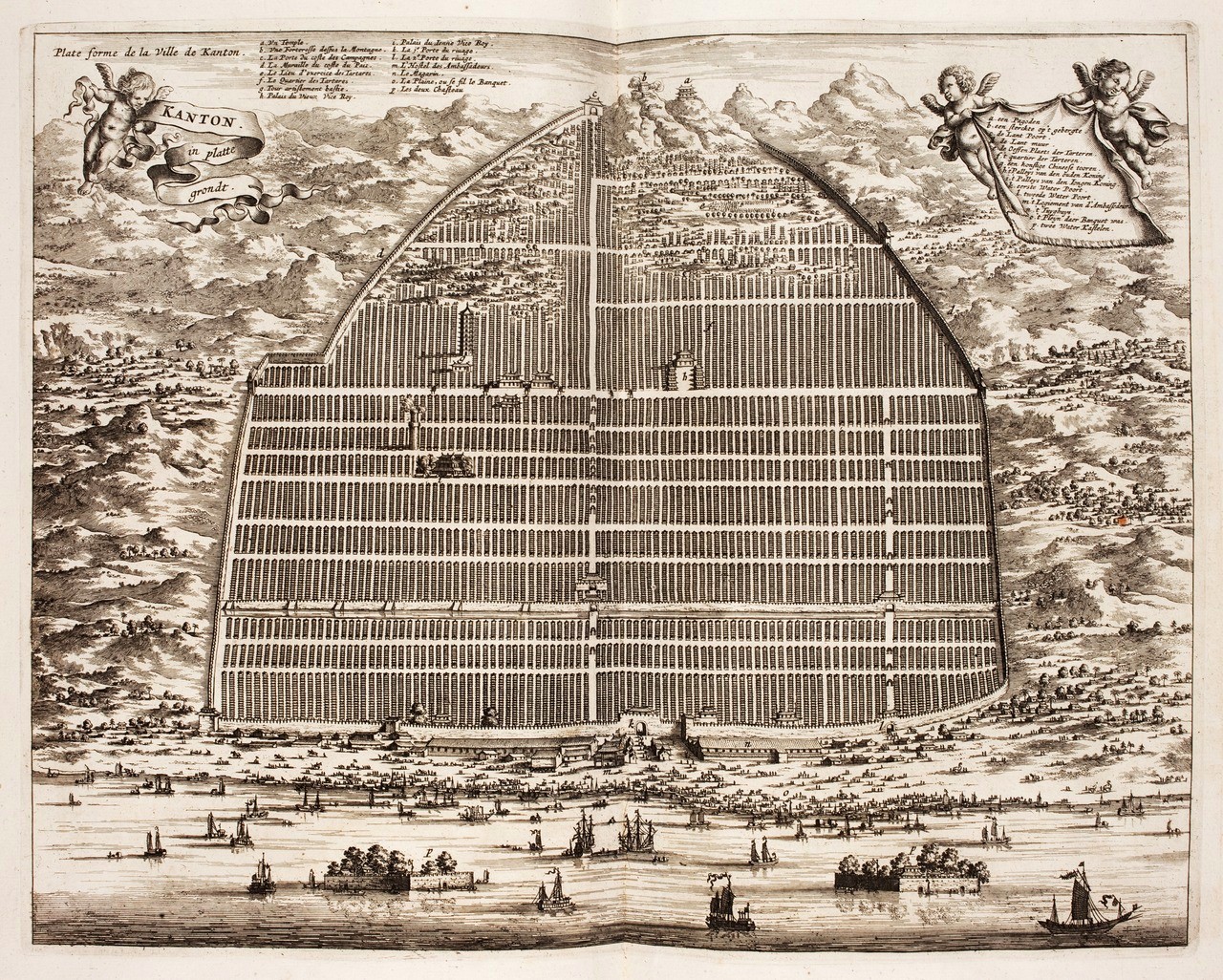
Nieuhof's imaginative 1665 map of 'Kanton'
The definitve account of the Dutch embassy to Peking. As purser of the VOC-embassy to Peking Johan Nieuhof in 1655 had special instructions to observe all "farms, towns, palaces, rivers, ... [and other] buildings" that he might pass by, drawing them "in straight form and figure", as well as remains of the historical victory of the Tartars that brought an end to the reign of the Ming dynasty.
Nieuhofs brother Hendrik produced an ample study of China, with many images, text and explanation of the latest events resulting in this publication. The 150 pictures encouraged chinoiserie, which became especially popular in the 18th century. Many artists and architects based their designs on the pictures in Nieuhof's books.
The original pictures were rediscovered in 1984 in the collection of prince Roland Bonaparte, an anthropologist who collected material about Madagascar, Lapland and the Native Americans.
First German edition published in Amsterdam by Jacob van Meurs, 1666, as, Die Gesantschaft der Ost-Indischen Geselschaft in den Vereinigten Niederlandern, an den Tartarischen Cham.
A